Before I start talking Youloop, I have a little confession to make up front:
At the Winter SWL Fest when I gave a presentation about Portable SDR DXing, not only did I give attendees the wrong name of the Airspy Youloop antenna, but I also configured it incorrectly, hence the poor performance via my Miscrosoft Surface Go tablet PC.
I had assumed the the crossover component of the antenna was the transformer component. I realized the mistake I made when I saw some of the first promotional photos of the Youloop antenna a few weeks ago.
Doh! I’m trying to forgive myself for making such an obvious mistake, but in my defence–and in the spirit of full disclosure–my antenna was a very early sample prototype without instructions, diagrams, etc. so I set it up imagining it being similar to the homebrew loop Vlado and I built. (FYI: When I say “Vlado and I built” it, I really mean, “Vlado built it.”)
So obviously I made a poor assumption.
Once I assembled the antenna correctly? Wow. Just. Wow!
Youloop: The ideal travel antenna for high dynamic range SDRs

The Youloop, Airspy HF+ Discovery, SDRplay RSPdx, and all cables easily fit in my Red Oxx Lil Roy pack.
The Youloop is truly the travel antenna I’ve always wanted for portable SDR DXing. Here’s why:
- It’s incredibly portable and can be rolled up to fit in a small travel pouch
- It has all of the low-noise characteristics of other magnetic loop antennas
- It’s wideband unlike many passive loop designs
- It requires no variable capacitor or tuner
- It’s made of quality components
- It requires no external amplifier nor power source
- It takes one minute to assemble
- It’s affordable (~$35 USD shipped)
The only caveat? To take advantage of the Youloop, you must use a high dynamic range receiver.
I can verify that this antenna works brilliantly with the Airspy HF+ Discovery.
It will also pair well with the Airspy HF+ if you shortcut R3 via the R3 modification.
I’ve also used it numerous times with the new SDRplay RSPdx while using SDRuno in High Dynamic Range (HDR) mode. With the RSPdx, I can make spectrum recordings of the entire AM broadcast band. Note that HDR mode is only available on the RSPdx at 2 MHz and below, using the SDRuno app.
I have not tested the Youloop with other SDRs yet. I will soon test it with my WinRadio Excalibur.
So how well does the Youloop perform?
Listen for yourself!
I’m doing a little cargiving family members today. Their home is swimming in RFI (radio interference/noise). In the past, I’ve struggled to make good mediumwave recordings at their home–certainly an ideal situation for a mag loop antenna.
This morning, I wanted to record one of my favorite local AM stations (WAIZ at 630 kHz), so I set up the Youloop in the middle of a bedroom, hanging off a large bookshelf set against an interior wall. In other words: not an ideal situation.
When I plugged in the Airspy HF+ Discovery and loaded the Airspy SDR application, I fully expected to see a spectrum display full of broadband noise.
Instead, I saw signals. Lots of signals:
Sure, there’s some noise in there, but it’s low enough I could even do proper mediumwave DXing on most of the band if I wished.
In fact, if you’d like to experience the HF+ Discovery/Youloop pairing in this compromised, less-than-ideal DXing setup, why not tune through one of the spectrum recordings I made?
Click here to download the spectrum file [885.7MB .wav].
The recording was made on March 30, 2020 starting around 10:50 UTC. You’ll need to open this file in AirSpy’s free application SDR# or a third party SDR app that can read AirSpy .wav files.
I can’t wait to try the Youloop in other locations. Since we’re in lock-down due to Covid-19, I won’t be able to try the Youloop in a hotel any time soon. Almost all of my 2020 travel plans have been canceled.
Highly recommend
If you have one of the SDRs mentioned above, go grab a Youloop. At $35 USD, it’s a fantastic deal.
Click here to check out the YouLoop at the RTL-SDR.com store ($34.95 USD shipped).
Click here to check out the YouLoop at Airspy.US ($29.95 + shipping).
Click here to search for AirSpy distributors in your region/country.
If you don’t have a high dynamic range receiver, note that Airspy is exploring the idea of making a pre-amp for the Youloop. If interested, you might drop them a note of encouragement!
Do you have a Youloop? Please share your comments!
Do you enjoy the SWLing Post?
Please consider supporting us via Patreon or our Coffee Fund!
Your support makes articles like this one possible. Thank you!


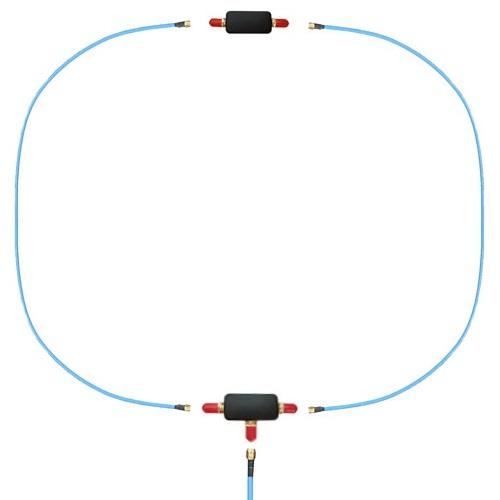
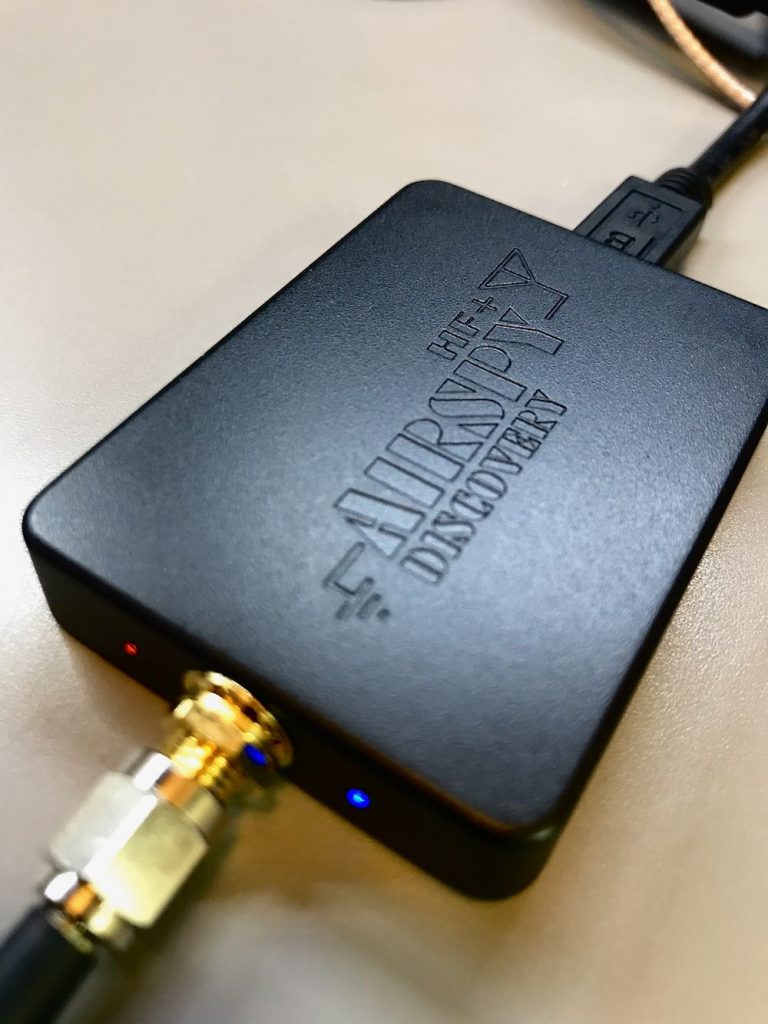
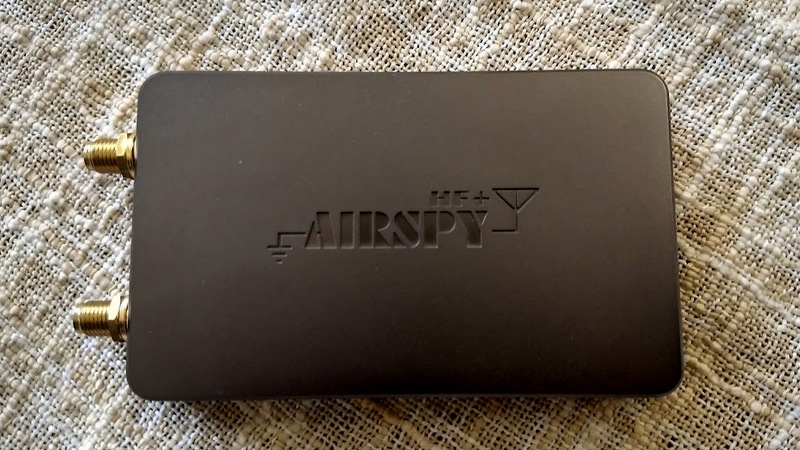
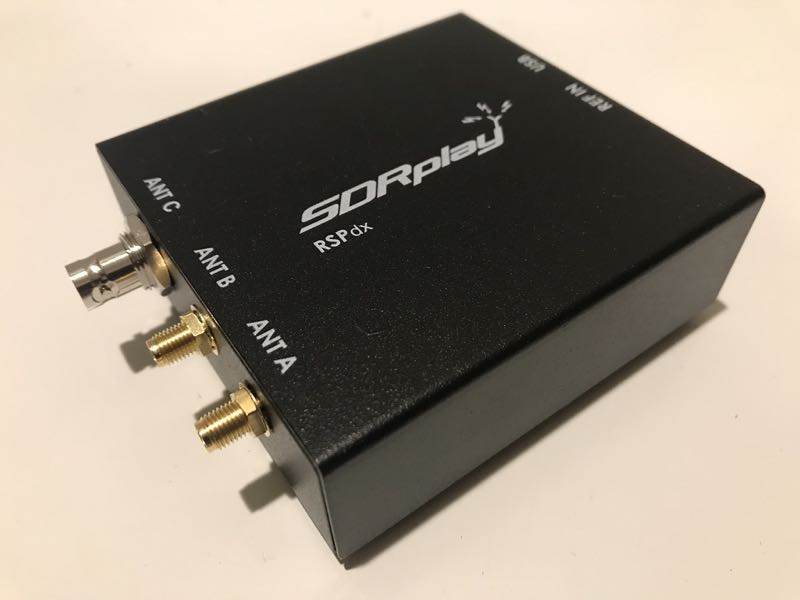
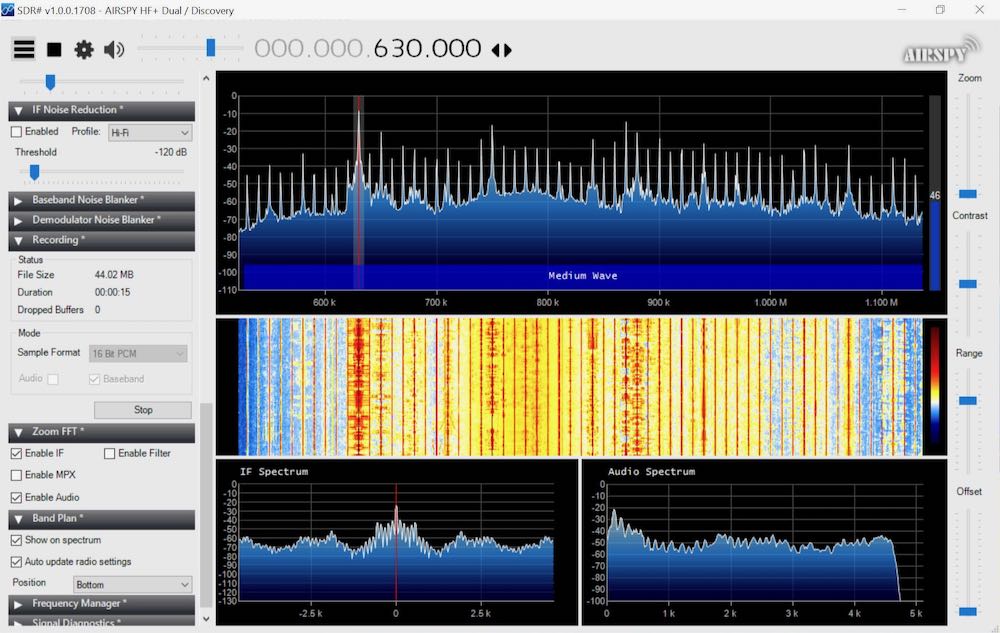

Are there any portable receivers that qualify as an HDR receiver?
Possibly, have a look at this:
https://www.youtube.com/watch?v=NhU21s1UnuE
The video compares the reception of a TEF6686 based receiver with the Youloop and whip antenna.
Using Youloop antenna with malachite (version with the extra antenna board): it is simply a perfect marriage from 10khz till… 200khz! Love it… I travel frequently from Portugal to North of Africa and the couple are working super!
Since the experts are to be found here, I would like to ask the following:
I currently have an MLA-30 loop antenna here and will soon also get an Airspy Youloop. My receiver is an sdrplay rsp1a.
I also have a Grundig Satellit 700 here. Can I connect it to the Youloop antenna? The problem is that the Grundig Satellit 700 has a non standard antenna connection (coax/IEC male). I can’t find any adapter at all to connect an sma cable.
So I guess I have to use 2 adapters, but my questions are:
a) which adapters should these be?
b) the Grundig Satellit 700 has 70 Ohm (if I’m not mistaken).
c) the sdrplay rsp1a has 50 ohms?
d) are there problems because of the difference 50 Ohm/70 Ohm?
e) Does it make sense at all to connect the Youloop (or: MLA-30) to the Grundig Satellit 700?
I hope someone can help me here. Thank you very much.
Fred
There is lack of info about what exactly a HDR receiver is. While I don’t have a list of receivers (it’s implied most SDRs better than a Realtek are), here is a very technical article written 41 years ago. It likely applies today as the low end of what should be expected, while high end (using SDR with a lot of bits in the ADC and/or DAC) should likely be far better:
https://www.rfcafe.com/references/articles/wj-tech-notes/high-dynamic-range-receiver-parameters-v7-2.pdf
FWIW, I found this just by searching for “high dynamic range receiver”, and there are plenty more, but this seems the best of the bunch, enough to book-mark for future reference!
Hello, I imagine I also will have a couple questions regarding the use of the YouLoop which I’ve had for a while. When I got it I thought I could use it with my myriad of Sony’s, Drakes, etc! Obviously finally realized that you will need an High Dynamic Receiver. One of my problems, believe it or not, is after I purchase a nice SDR box how do I connect the SDR to the laptop? Is it more then one connecting cable? Do I need to buy an app. for the laptop? What about the YouLoop itself, what type of coax cable do I need to connect loop to the SDR box? Is it a SMA connector used? How long can the coax cable be from the loop to unit?
Tons of questions! Any guidance is appreciated.
Jerry
Hi Jerry,
“When I got it I thought I could use it with my myriad of Sony’s, Drakes, etc! ”
– Can you elaborate on what exactly made you think you can’t use the YouLoop with these receivers and what models are that exactly (particularly the Drakes – many of them can be considered “high dynamic range receivers”). My suspicion is that you just haven’t found the right position for the YouLoop to allow it to do its job..
– Why did you want to use a YouLoop in first place? No way to put up something outdoors? What is the noise level indoors?
Re SDR, I’d recommend reading Thomas’ excellent SDR primer series:
https://swling.com/blog/tag/sdr-primer/
All recent/decent SDRs just need an USB cable and they all come with some SDR software and there’s a variety of free programs, most of them have an SMA connector for the coax, since the YouLoop doesn’t produce much voltage the coax needs to be as short as possible and as high quality as possible BUT since it apparently didn’t work well with any of your receivers chances are that it won’t work well with an SDR either, so you first need to figure out what exactly made the YouLoop perform badly .
Out of curiosity I recently ordered a YL (and by that I mean the YouLoop, not a mail-order bride!) and got it today. Too early to say anything about how good or bad it is but out of more curiosity I inserted a cheap Chinese preamp directly at the transformer piece of the YL and the difference in SNR was unmistakable.
Not sure what’s happening there but it’s in accordance with the experience described in some other Möbius loop article that was linked to here somewhere. It’s certainly not the radio’s fault (the IC-705 has plenty of gain reserves to make a preamp unnecessary) but the preamp really made a difference. If and how that can match the more than 10x more expensive ML-200 with a slightly bigger rigid loop is certainly an interesting subject for a shootout, but with the preamp, over my noisy bedside (yes I’m sleeping underneath an antenna!) it seems to do the same job.
I was just wondering about using an Low Noise Amplifier with the YouLoop. I don’t seem to be getting good results in HF. I’ve recently been researching active loop antennas and got to thinking that pairing the YouLoop with an LNA would essentially make an active loop antenna.
In response to John Brandt:
There are, of course, many variables that can influence reception of signals; there are too many to list here.
As far as directionality, this is a common trait of several antenna designs. The first example that comes to mind is vertical versus horizontal antennae, depending on the sending antenna. An example involving cardinal (compass) directions would be the ferrite core antennae found in old AM radios; rotating the antenna so that it’s perpendicular to the source provides the best reception, regardless of sender “H vs V”
Think of it this way. If the signal is coming toward the antenna “edge on”, the signal has far less antenna to excite. But if it comes in “head on”, it can act on a larger surface area of the antenna.
I have no personal experience with this, or any other, passive loop antenna, but it would not surprise me that any antenna with a larger cross-section in on direction will have better reception in that direction.
Don’t just take my word for it. Experiment with different directions, and find out for yourself!
Hope this helps!
I purchase a YouLoop shortly after reading this article back in March and absolutely love it. I immediately went from hearing 1-2 amateur radio contacts to dozens on 80 and 40 meters at night – all with very little noise. I live in an apartment, so I have this critter hanging flush in a wooden window frame (outside bug screen removed) facing basically west. From my location in Maine I have still been able to pick stations to the south, but the best are located to the west.
I am a little fuzzy on the directionality of this antenna. I am assuming that the greatest sensitivity is in the two directions that the antenna is “pointed” at. I am also assuming that “pointed at” means perpendicular to the widest part of the loop. So, if my antenna is flat against a west facing window, the antenna is facing west and east. Sorry for being so literal.
Inversely, the antenna is least sensitive to stations/sources to the north and south.
Am I correct?
J
Edgeways on to the station is the dummy side or least sensitive, the face or full circle of the loop should face the station in question, take no notice of the chinese illustrations about it, they havent a clue. a small antenna rotator would be helpfull here, 12volt operation. Should we ask the chinese to make one for us, cheap as chips or should be.
Do you think it would work with an SW radio like the Skywave SSB, R-108?
No–I wouldn’t expect so. At least, not well.
In anticipation of someday getting a SDR radio, I went ahead and purchased this antenna. I got a few different adaptors, so I could try it with traditional radios. I have a really old Drake SW8 shortwave receiver and I tried it on mediumwave local AM stations, since HF is dead lately. Without a preamp, which I don’t have, it is not as good as my telescopic whip antenna. All local AM stations show me a reduced signal strength, maybe from a S9 with the whip to a S7 or so with the loop. Does this mean if I got a preamp it might be equal to my stupid whip? If that’s the case I would not be impressed. Then I tried it with my SDS200 vhf/uhf trunking scanner. I first tried it on conventional 118-137 Mhz aircraft signals, since these are easy to pick up. With the crude bar graph signal strength meter on the SDS (only 5 bars max) it was impossible to tell if it picked up controller and aircraft better or not without much more stringent study. It did have an advantage in that it’s much more immune to interference from my desktop PC, which is a bonus. Also using the SDS whip, I no longer get big changes in signal when I get a hand or arm close to the SD200 radio itself. Since the top of the SD200 acts as sort of a ground plane if you get a hand or arm around the radio. Especially around the top of it, it will improve or reduce signals. This loop seems to work well on 800 Mhz or higher trunked systems. Very nicely indeed, so expect this antenna to do more than just HF work. How it works so well on high UHF, I don’t know.
But at this time I don’t know if this antenna is much better than just a length of wire for HF. Maybe it is, maybe it’s not. I don’t yet own a SDR, that will be the big test where I will compare it with various SW antennas. A week or so ago I got one of those irritating religious station on HF somehwere, too bad I didn’t find anything on HF at all
This antenna is very interesting in that it really works well with receivers that have a high dynamic range. I really can’t speak to the science behind that, but Airspy (and other more knowledgeable radio enthusiasts could). With my RSPdx and HF+ Discovery, it’s a very impressive antenna–kind of mind-blowing really for a passive loop. I tried it with a portable and found it didn’t really work that well, though. The whip was much better. I keep meaning to test it with my Elecraft KX3 transceiver as I feel like that might be a good match.
It’s my understanding that the in-line pre-amp really helps out when you’ve a longer coax line to the loop. I’m sure it could also help boost output, but that again would be a question for Airspy.
What’s considered a “high dynamic range” radio? I have an old Drake SW8 portable that has an PL-259 antenna jack on the back and it has a dynamic range of 95db, according to specs. If I got an adaptor SMA to PL-259 would this antenna do anything without a preamp? Please someone answer me as I plan to come back from time to time to look for a response from someone who know. Thanks
hi
Does anyone know the nomenclature of the Cable used for the Loops
It looks like one can use Coax Cable for the two turn loop by connecting the shield and the inner conductor in series .
Also information on the matching transformer
Also the practical maximum length of the Coax Feed line
Do you have tested this loop with a classic receiver made in the ’70 and ’80 (example: Kenwood R-600, 1000,2000, 5000, Yaesu FRG 7, 7000, 7700, Drake R7 , R8, JRC 515, 525, ecc.)?
This is a great discussion, I’m afraid I have a really stupid question.
Can this antenna be used with a older portable SW radio like the Panasonic RF-2200 (It has a twinlead 75 ohm connection.
The Panasonic RF-2200 is a fantastic radio, but its receiver would not be able to fully take advantage of this loop design. I’m sure it would work to some degree, but it’s really an antenna designed to pair with high dynamic range receivers like the SDRs mentioned in the article. When I’ve tried this loop on portables, so far, the results are pretty mediocre. On SDRs like the HF+ Discovery and RSPdx, it’s fabulous.
OK, OK you guys have me totally lost. I will proceed to ask my stupid question. I purchase an SDRPlay RSP1A some time ago now with the hopes of having an effective and inexpensive means to enjoy shortwave and AM longer-range reception. I even thought I might learn something in the process. I eventually shelved the RSP1A for lack of a decent, affordable antenna. Is this an appropriate antenna for the RSP1A?
That’s what I’m using. Works well.
I have purchased a Youloop for my RSP1A. I plan to run three meters of cellfoil low loss RG58 coax plus an antenna switch between the SDR and the antenna. I will be using the Youloop in quite a noisy environment. When I have set up and tested the antenna, I will comment with my results. This will enable me to switch between a wide-band helical antenna and the magnetic loop to cover the majority of the tunable spectrum on the SDRplay. If anyone else has used a RSP1A with a Youloop, please join me in discussion about your success.
As promised, I would report on my findings with the Youloop and the SDRplay RSP1A. I can see great potential by using my Youloop in a higher elevation and lower noise environment. Currently I don’t receive anything other than strong medium wave signals. I think it was a great experiment in learning just how much noise there is in a daytime workshop/office environment.
Things I will try in the near future: Switching off all unnecessary electronic devices nearby. Trying the experiment at night. Positioning the antenna to null out any unwanted noise. Assembling the antenna outside. Trying different configurations of coaxial cable or maybe removing my antenna switch from the equation. Maybe upgrading the RSP1A’s case to the metallic variety and possibly looking into grounding it. And finally trying different software packages.
If anyone else has other suggestions, I would be keen to fit the ideas into my experiment. I might look into an ultra low noise amplifier if I can see results improve from my future research.
I ordered this the instant I saw the price. A low cost high performing antenna has been the missing link for me in wanting to invest in higher end SDRs. I’m really looking forward to using this.
> “If you don’t have a high dynamic range receiver, note that Airspy is exploring the idea of making a pre-amp for the Youloop.”
Can’t see how that’ll do anything to make up for a receiver’s lack of dynamic range. It’ll improve sensitivity, sure (or, rather, make up for the insensitivity of the loop) – but won’t improve the span between ‘minimum detectable signal’ and ‘maximum signal before overload’. Only a better receiver can do that…
Well first of all let me say that I agree with you, a preamp will raise the noise as well so it will worsen the S/N ratio, on the other hand, in some cases a LOW gain preamp may still be useful to account for cable signal loss and, if embedding a bandpass, to reduce unwanted offband interferences, other than that a preamp can’t improve a reveiver dynamic range, although … if it embeds a proper AGC capable of both amplificating or attenuating signals it MAY help avoiding RX overload and IMD, but for sure it won’t perform miracles; in this case (loop antenna) such a preamp may be designed to offer high dynamic range and implement an AGC with an adjustable (e.g. a trimmer) output level, in such a case one may adjust the preamp (ok, AGC) output level so that it will be just below the max input level accepted by the receiver
I would check with Youssef at Airspy. The only details I have about this are in that Twitter link. If this idea would take off, I’m certain he wouldn’t invest in a pre-amp unless it performed well. His gear is properly engineered.
Youssef is currently designing a preamp with input from the community. A good conversation is taking place on the Airspy IO group.
Do you know if Youssef’s preamp will be waterproof? Read through some of the conversation but could not discern much beyond it being +15dB and wideband.
Just received my youloop…am planning to pair it to a CommRadio cr1…just wondering if my efforts will be for naught though…
Wanting a truly portable sdr set up for long motorcycle trips
Does it works on your commradio cr-1
I’ll hazard a guess that “high dynamic range receiver” requirement is actually a “highly sensitive receiver” requirement. A small passive loop will have very low signal levels, so that dynamic range is being used to reach way down low (no signals are going to be particularly strong). For a RTLSDR, the signal levels would simply be below the noise floor of the receiver it’s self. In this case, a low-noise pre-amp would be needed to make the antenna work with a RTLSDR.
That’s my partial guess too – cheap SDRs tend to lack sensitivity at lower frequencies, have a higher internal noise floor than better SDRs (or even a reasonable modern portable), and loops are inefficient anyway (though, as evidenced by my previous comments here and elsewhere, I’m a big fan of them in general when properly designed and used appropriately).
But many people – including many who ought to know better – seem to conflate or have trouble grappling with the difference between internal & external noise floor, sensitivity, and dynamic range, which is probably where the confusion comes is…
To address a couple of other responses here, for convenience:
– What a preamp needs is (a) linearity, (b) high enough compression point (note: not dynamic range, though it factors into it) to not overload on strong signals, (c) dynamic range higher than the receiver following it (to prevent the preamp being the limiting factor for DR), and (d) a low enough noise factor that it doesn’t affect the noise floor too much (i.e. the lower the better).
– Compression violates (a) – though AGC violates that rule too, a well-designed AGC minimises linearity errors and should not drive the receiver into overload. That’s difficult to do when there’s no feedback (there’s a reason the AGC control is derived from the end of the IF chain, or sometimes post-detection).
– That aside, the big issue for SDRs is that it’s the sampling stage that is the ultimate limit on dynamic range (e.g. 8 bit sampling = ~50dB DR; 16 bit = ~96dB; etc – at *best*; typically, you can subtract a bit or 2 from that). Other things (e.g. IP – however you want to measure it – in analogue front-end stages, phase noise, etc) will affect DR, but can only make it worse – you’ll *never* do better than the limit set by the # of bits.
– That said, you can improve the effective number of bits (ENOB) by oversampling/decimating – but at a great cost to sampling bandwidth (each halving of bandwidth adds 1 bit, gaining ~3dB of DR).
A preamp really doesn’t help with any of those, though it can shift a weak signal up into the available dynamic range ‘window’ so it can be detected (provided there’s no strong signals within the sampling bandwidth that will be driven into overload). But that boils down to “improving sensitivity” – not dynamic range…
I won’t really comment much about the ongoing preamp design thread, since I’m a bit miserable at the moment due to COVID-related lockdown and some recent dental work. The basic design so far is a long-proven one – I first saw it in the 70’s – but the marketing-like claims are a bit annoying, e.g. the “modern silicon” it “leverages” to obtain “low power, high linearity, low NF” is itself 20+ years old…
Hi Ron F.,
A high dynamic range preamp becomes part of the receiver system, being high dynamic range it will receive both extremely weak signals and extremely loud signals without overloading. It becomes the front end of the SDR receiver. You’re right that if the full dynamic range would be sent to the SDR receiver it would still overload, so it would have to be compressed which is similar to what conventional receivers do with automatic gain control circuitry (AGC).
With the output amplitude reduced, the SDR no longer overloads (for example) in the Medium Wave broadcast band.
We associate preamp with increasing sensitivity, but it doesn’t have to do just that, it is just an additional independent circuit before the first radio frequency amplifier stage.
Military communications receivers would overload when the ship was sailing on the Mississippi River, but adding a high quality preamp would clean up the reception, the random noise across the spectrum would disappear and no longer prevent reception if needed signals even though the overall sensitivity of the original receiver was reduced the receiver no longer overloaded which generated noise “hash” throughout the radio’s frequency capabilities.
I’m using a home brew youloop with my RSP1A and it made a huge difference for me. I’m hearing stations I could never touch before.
Would the Elecraft KX3 qualify as a high dynamic range receiver? What a combination that would be!
You know, I hadn’t thought about trying the KX3. I’ll have to get on that (and make absolutely sure I can’t trip the TX!).
Oh gosh, YES, the Elecraft KX3 has a dynamic range that puts many other receivers to shame. The Youloop would be an excellent receiver antenna for the lower HF bands.
The big deal about the Youloop is that it provides isolation between the antenna and all the ambient noises near the receiver. These ambient noises are things like switching supplies, noise from computing devices, motor drives (such as what you might have in some ceiling fans), LED lighting, and so on.
However, that little isolation transformer on the Youloop will not handle significant power. The goal was isolation, not efficiency. So, if you transmit in to it, at the very least you will heat up the RF isolation transformer, and you will probably damage it.
Got mine last Friday but with online teaching and myriad other duties, haven’t had a chance to try it out yet. Sigh! But soon I hope. Will report back then.
Yes, please do, Richard!
Can you please use Google drive or something similar to host your I/Q files? Really doesn’t need to take 50+ mins for 900Mb at 60mbps… thx.